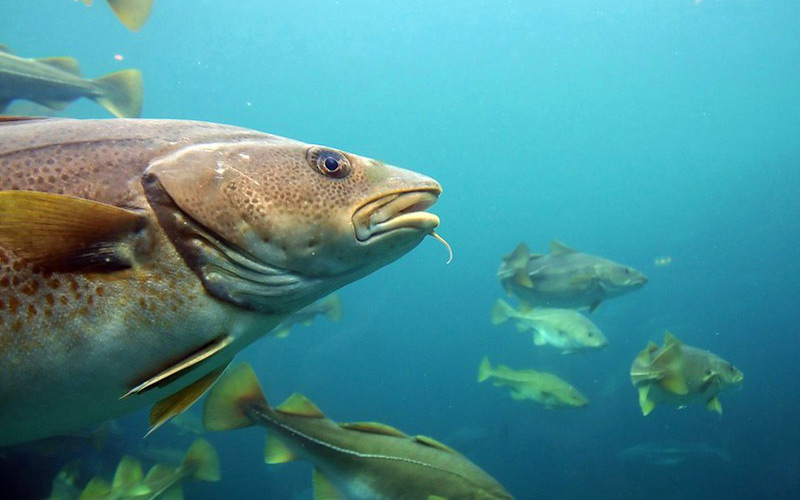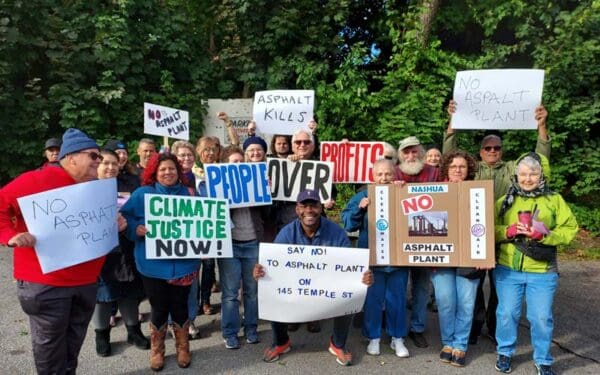
Overfishing hurts iconic species like Atlantic cod – and the coastal economies that depend on them. Photo: Joachim S. Muller
For many, the word “overfishing” sparks a particular image: a boat carelessly hauling tons of fish out of the ocean. But this visual fails to paint a complete picture. The actions of an individual boat do not cause overfishing. It’s a systemic problem in which federal regulators may allow fish to be caught faster than they can replenish themselves.
The good news? Solutions exist to end overfishing. The federal government is ultimately responsible for ensuring that overfishing does not occur and that our fishing is sustainable. We need federal agencies to take bold and immediate action to save our ocean resources – and hold them accountable when they don’t.
What Is Overfishing?
Simply put, overfishing means catching fish faster than they can reproduce. If overfishing of a population continues unabated, it can lead federal fisheries managers to declare it overfished – meaning that it has fallen below a healthy population level.
In New England, NOAA Fisheries lists 15 fish populations as overfished in its annual report on the country’s commercial and recreational fisheries. That’s more than any other region in the country. Among them are herring, witch flounder, and the iconic Atlantic cod. Of those 15, overfishing continues for 4 populations, including cod.
Overfishing spells bad news for coastal communities whose livelihoods depend on healthy fisheries. It also affects marine wildlife – such as sharks, humpback whales, and puffins – that rely on these fish for sustenance.
Who’s Responsible for Ending Overfishing?
Commercial fishermen don’t simply go out into the open ocean and guess how many fish to catch and how many to leave behind. Using the best available science, fishery managers set catch limits that determine how much of each fish population can be caught annually. These limits are meant to prevent overfishing – the primary mandate under our federal fisheries law, the Magnuson-Stevens Act.
If overfishing of a specific fish population does occur, federal fisheries managers are required to act to stop it. Those actions can include setting stricter annual catch limits and closing certain areas, among other efforts.
Since it was enacted by Congress in 1976, the Magnuson-Stevens Act has made significant progress in restoring the health of many U.S. fisheries. In 2013, two-thirds of the U.S. fish species that had struggled to rebound from overfishing showed signs of bouncing back thanks to this federal law. We must ensure progress like this continues. Healthier fish populations help communities grow their coastal economies, including the number of jobs within the local fishing industry.
Overfishing Can Threaten Iconic Fish Species
Despite these successes, fishery managers have struggled to manage many critical fish populations sustainably. Atlantic cod, for example, has been overfished for more than three decades. Their population numbers in New England are dire. While fishery managers have drastically cut cod catch limits several times over the past decade, those measures have not yet been enough to make a difference. That’s why we must also adequately protect habitats that cod need for spawning and juvenile nurseries from fishing.
Bold Action Can Rebuild Fish Populations
The Magnuson-Stevens Act requires fishery managers to implement measures to prevent overfishing and rebuild fish populations. Such measures have proven effective in helping fisheries bounce back.
- Set sustainable, science-based catch limits: Sustainable catch limits based on sound science are crucial to preventing overfishing and putting overfished populations on the path to recovery. Scientific studies show that stocks are more likely to rebuild if there’s an immediate ramp-down of fishing instead of making small reductions over time.
- Collect accurate data and science: Fisheries management can only be as good as the data that it is based on. We must ensure that scientists and managers can access accurate fishing information to set sustainable catch limits. And we must ensure that our fish population assessments are improved to account for the impacts of climate change and other uncertainties.
- Protect habitat: Fish need refuges where they can spawn, grow, and thrive, which is critical to helping a population rebuild.
You Can Help
Your support has been critical to our advocacy efforts to protect our fisheries. As we continue our work to build sustainable fisheries, your voice can help secure better management measures in New England. Stay tuned for more opportunities to speak up for vital species like cod and the fishing communities that depend on them.




